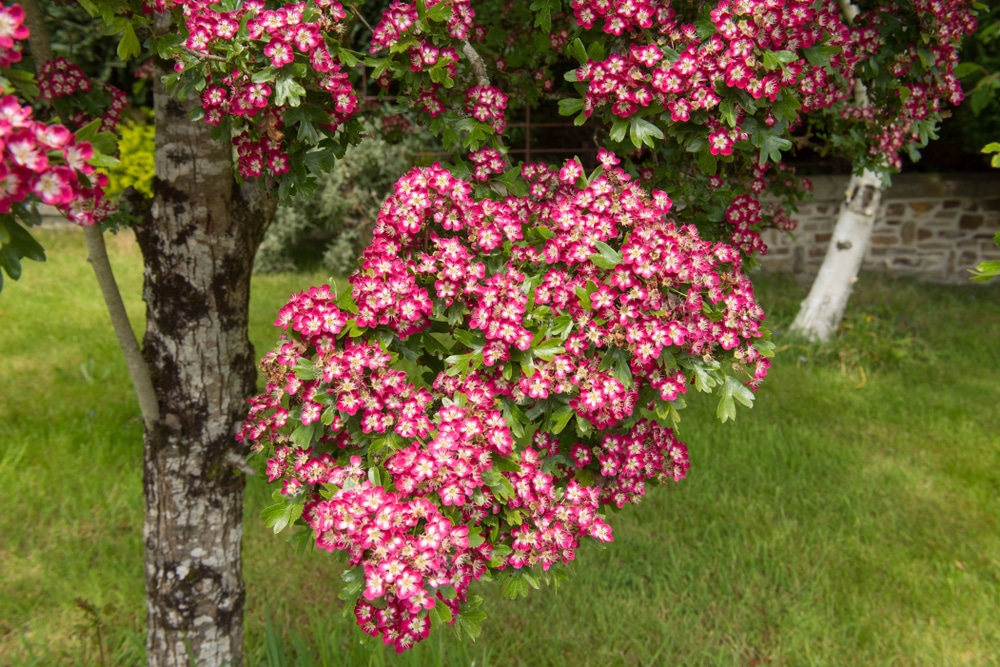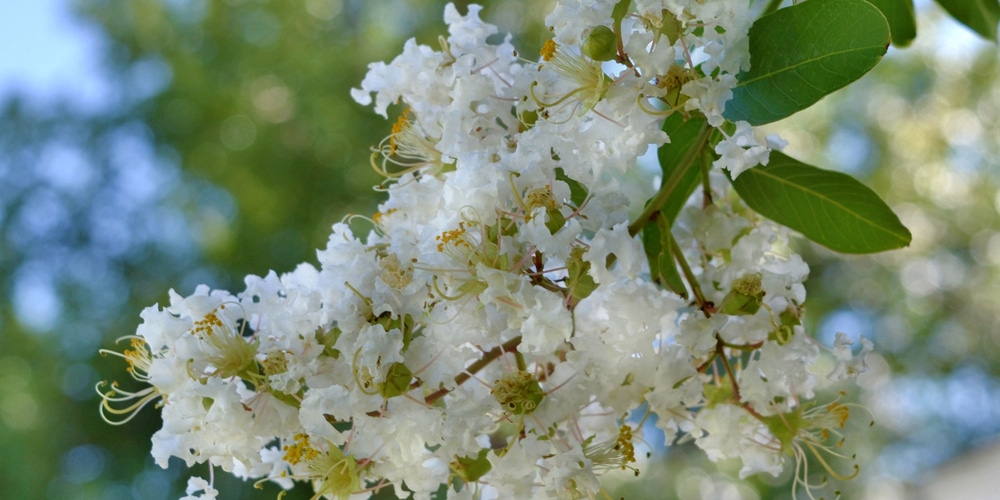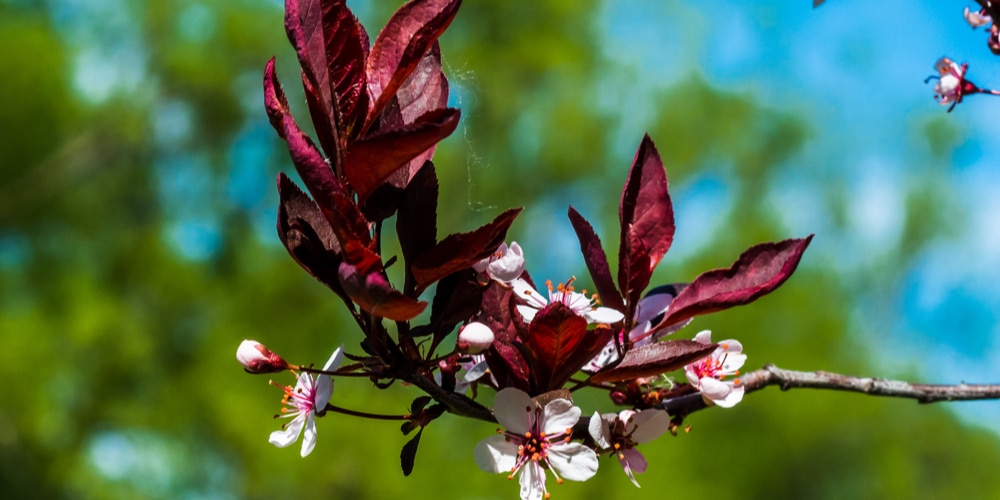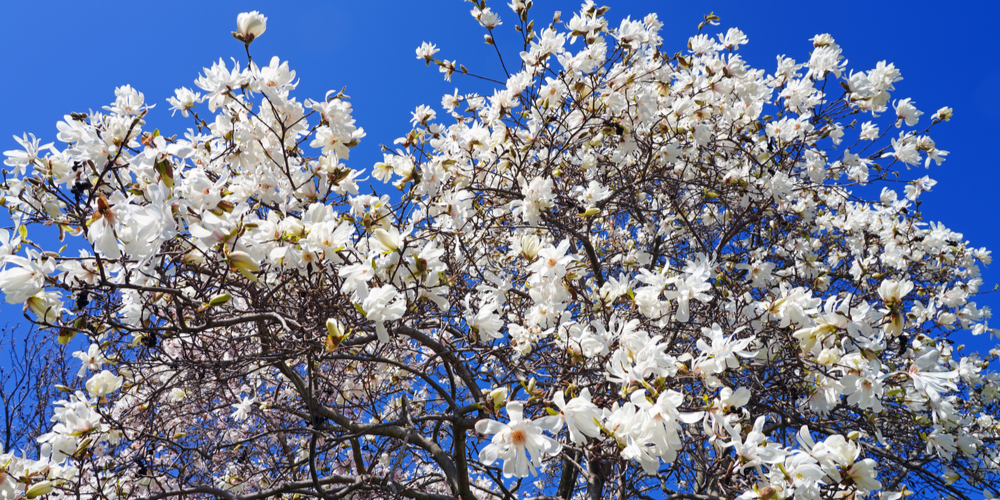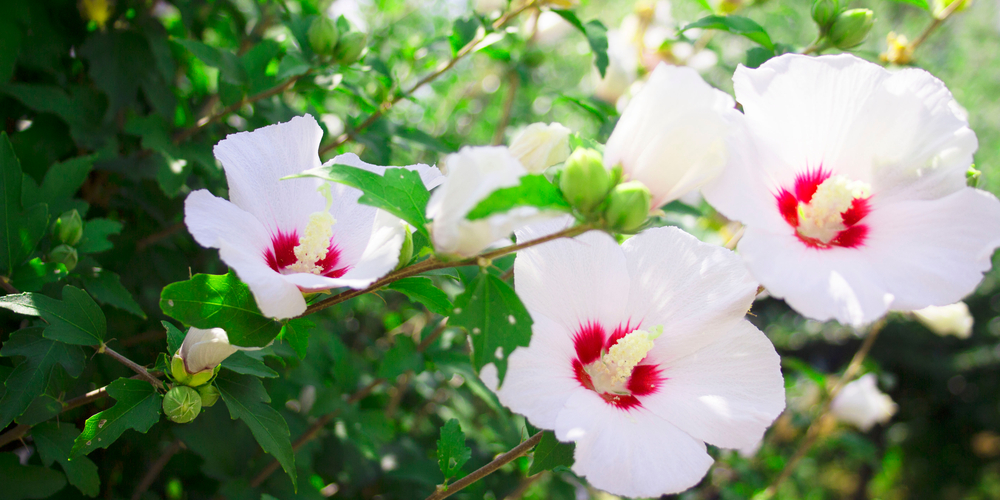Flowering trees make a stunning addition to any garden by adding color, texture, and shade. However, you’ll want to make sure you choose trees within your hardiness zone so your trees can thrive.
Here are six varieties of summer flowering trees to brighten your yard.
Oleander (Nerium oleander)
- Bloom color: White, yellow, salmon, pink, peach, or red
- Sun exposure: Full sun to partial shade
- Hardiness zone: 8-10 (USDA)
Oleander grows naturally as a mounded, round shrub, but you can train it as a small single- or multi-trunked tree. It features dense, dark green, and leathery foliage, making a beautiful privacy screen in groups or along a border.
One outstanding attribute of oleander is its exceptionally long blooming period. You’ll get to enjoy 1-3 inch flowers popping up from spring to summer, sometimes carrying into fall or year-round in warmer areas.
English Hawthorn (Caesalpinia pulcherrima)
- Bloom color: Pink, red, or white
- Sun exposure: Full sun
- Hardiness zone: 4–8 (USDA)
English hawthorn is a deciduous tree with dense, thorny branches and multiple stems that grow in a rounded crown in maturity. The foliage is dark green and glossy. This gorgeous tree blooms in spring and summer, bearing an array of tiny flowers in shades of red, pink, or white.
It reaches an average of 20 to 25 feet at its full height. This plant is considered invasive in some areas.
Natchez Crape Myrtles (Lagerstroemia x Natchez)
- Bloom color: White
- Sun exposure: Full sun
- Hardiness zone: 7-10 (USDA)
The Natchez crape myrtle tree is a classic in southern parts of the United States. In autumn, its bright green foliage fades to an eye-catching reddish-orange. If you want a tree on the taller side, this tree can reach up to over 30 feet tall.
Although the foliage is pretty enough, the main selling point is its flowers. Not only do they grow in clusters of white flowers, but they have a long-lasting display (mid-summer to fall.)
Purple-Leaf Sand Cherry (Prunus × cistena)
- Bloom color: White or light pink
- Sun exposure: Full sun
- Hardiness zone: 2 to 8 (USDA)
Purple-leaf sand cherry can be left as a shrub or easily trained to grow as a tree, reaching up to 7-14 feet tall. This ornamental tree produces light pink or white flowers in late spring to early summer. Even when this beauty isn’t in bloom, its unique purple foliage will add color to your yard.
Then, in autumn, the purple transitions into a bright red shade, making it a stunning tree nearly all year round. This tree can be toxic to pets or humans.
Star Magnolia (Magnolia stellata)
- Bloom color: Red, pink, yellow, white, or purple
- Sun exposure: Full sun to partial shade
- Hardiness zone: 4-9 (USDA)
The star magnolia tree gets its common name from its distinctive star-shaped white flowers. This deciduous, slow-growing tree grows in a rounded habit that reaches an average of 15-20 feet at maturity with a similar spread.
You can enjoy its blooms in late spring or early summer before it produces bright pink seed pods. Then it bears its fruit of vibrant orange seeds in early fall.
Rose of Sharon (Hibiscus syriacus)
- Bloom color: Lavender, red, white, bluish, or pink
- Sun exposure: Full sun to partial shade
- Hardiness zone: 5 to 8 (USDA)
Although the rose of Sharon is technically a large flowering shrub, many homeowners grow it as a tree. It reaches roughly 12 feet tall with a slightly smaller spread and is a long-blooming beauty that bears its flowers from June-October.
Its showy five-petal, paper-like blooms can be various colors, including bi-colors, that are 2-3 inches in diameter. As a hibiscus plant, its flowers have a prominent stamen and a darkly shaded throat.
Final Thoughts
Although most trees bloom in the spring, you don’t have to miss out on color in the summer months. Adding summer-blooming trees to your yard or garden can allow you to enjoy bursts of color for several months of the year.

